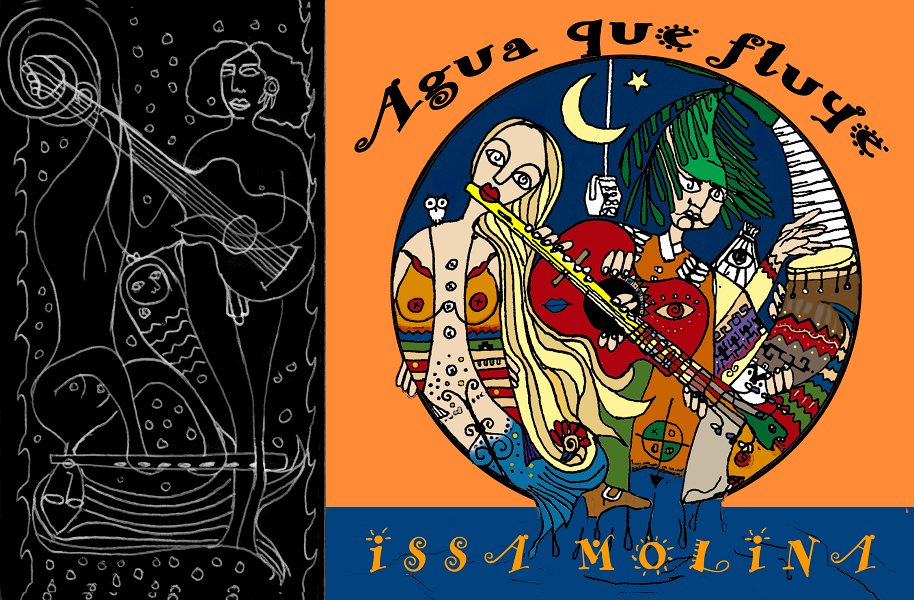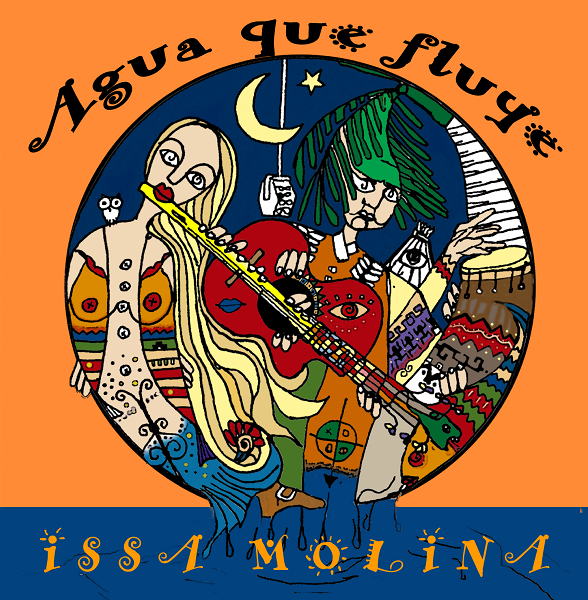«Agua Que Fluye,» from the self-titled album, is a Bossa Nova piece that combines electric guitar, flute, and Latin percussion. This song, structured in an AAB form, begins with an arpeggio on the electric guitar that sets the tone and rhythm of the piece, followed by the melodic interpretation of the flute with Latin influences.

The combination of distorted electric guitar and Latin percussion creates a solid atmosphere that sustains the composition. At the same time, the E minor tonality adds a melancholic and suggestive nuance to the auditory experience. The closure with a final guitar arpeggio and flute phrases reflects serenity, creating a sonic image of continuously flowing water. This fusion of Bossa Nova elements with modern touches of electric guitar stands out as an innovative example of genre fusion.
Musical Composition of «Agua Que Fluye»
Analysis of the AAB Structure
«Agua Que Fluye» follows an AAB format. The guitar sets the tone, the flute plays the theme, and the distorted guitar delivers a solo. Drums and percussion create a solid rhythmic and harmonic section.
Instrumentation and Sound
This piece’s combination of electric guitar, flute, and Latin percussion creates a modern sound. The E minor tonality adds a melancholic nuance, while the ending’s guitar arpeggio and flute phrases paint a sonic image of water serenely moving. This fusion of traditional Bossa Nova with modern touches of electric guitar and Latin percussion reflects innovation and genre fusion in music.
Agua Que Fluye: Thematic Exploration
«Agua Que Fluye» is a musical composition embodying the concept of fluidity. This piece combines electric guitar, flute, and Latin percussion. The guitar provides fluidity, the flute adds elegance, and the Latin percussion grounds the piece. These elements combine perfectly harmoniously to create a dynamic and fluid musical experience.
Interaction between Guitar and Flute
The electric guitar and flute interaction is fundamental to the song’s structure and sound. While the guitar establishes the rhythm and tone with its arpeggios, the flute brings a Latin character to its sound. The contrast between the flute’s smoothness and the guitar’s distortion creates a unique balance that enriches the auditory experience.
Percussive Elements and Rhythmic Section
The drums and Latin percussion drive the rhythmic and harmonic section of the piece. These elements merge to create a solid, immersive rhythm that sustains the entire musical piece. Combining these instruments enriches the auditory experience and maintains the essence of Bossa Nova with a modern touch.
Integrating Traditional Sounds with Contemporary Ones
The piece’s fusion of genres is an example of musical innovation. It integrates traditional elements of Bossa Nova with contemporary touches, such as the electric guitar. This combination bridges the classic and the modern, creating a new auditory experience.
Conclusion: «Agua Que Fluye»
This song is a clear example of innovation in the fusion of musical genres. With elements of Bossa Nova and modern touches of electric guitar, flute, and Latin percussion, the piece manages to create an immersive and gloomy atmosphere that reflects its title. Combining instruments, the AAB structure, and the E minor tonality creates a unique and captivating auditory experience. The closure of the composition with a guitar arpeggio and flute phrases leaves a feeling of tranquility that evokes the image of water flowing serenely. In conclusion, «Agua Que Fluye» offers a fresh and attractive musical proposal.
You can hear this song:

